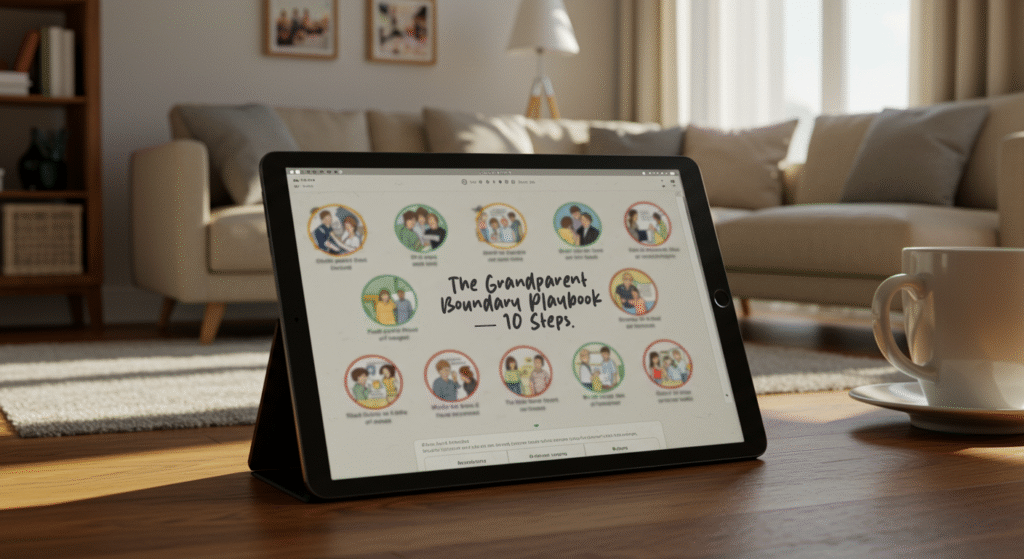The Grandparent Boundary Playbook: Protecting Your Parenting Without Blowing Up the Family
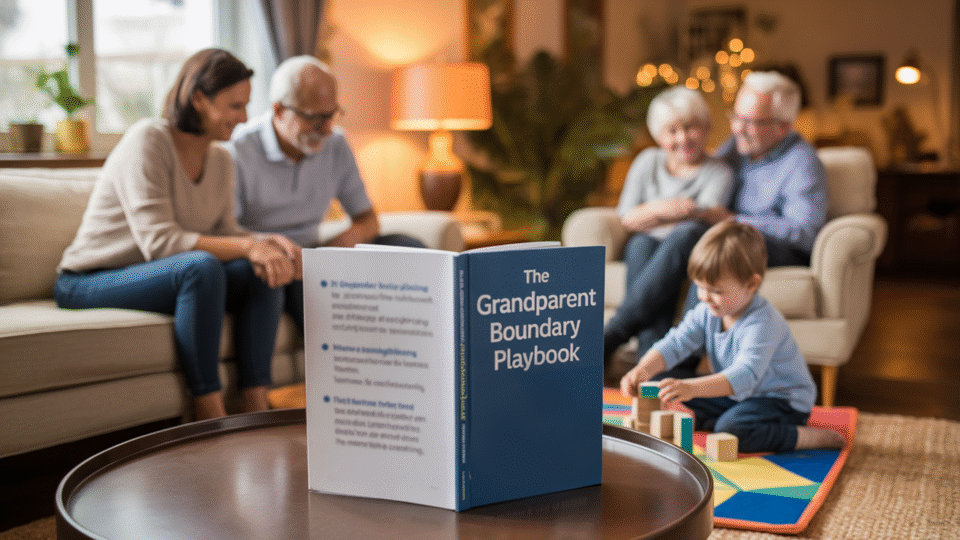
If you’re raising kids with clear values and a grandparent keeps crossing lines—about dating, faith, food, or phones—it can feel like choosing between peace and your principles. You don’t have to. This cornerstone gives you a simple path: clarify authority (parents lead, grandparents support), name the few boundaries that actually protect your child’s formation, and communicate them without contempt or panic. You’ll learn how to handle the guilt script (“You’re keeping us from our grandkids”) with truth and kindness, how to map “at-risk” moments, and how to set consequences that invite repair instead of warfare. Start here to re-center your home, keep the door open to relationships, and make your kids’ well-being the non-negotiable north star.
The Grandparent Boundary Playbook: Why This Feels So Heavy
 Grandparents are love – amplified. They hold our histories, smells of favorite recipes, and “when you were little” stories that knit children to a bigger story. That’s exactly why boundary friction lands with unusual weight. When a grandparent dismisses your agreed bedtime, swaps your faith practices for their new beliefs, or uses gifts and sugar to win compliance, it’s not just a broken rule—it can feel like a threat to the story you’re designing for your child.
Grandparents are love – amplified. They hold our histories, smells of favorite recipes, and “when you were little” stories that knit children to a bigger story. That’s exactly why boundary friction lands with unusual weight. When a grandparent dismisses your agreed bedtime, swaps your faith practices for their new beliefs, or uses gifts and sugar to win compliance, it’s not just a broken rule—it can feel like a threat to the story you’re designing for your child.
Two truths can coexist without canceling each other: grandparents are precious, and parents are responsible. In a healthy Western boundary framework, parents set the culture of the home and grandparents support that culture. When support becomes substitution—“At Grandma’s we don’t do your rules”—kids receive a confusing lesson: authority is flexible and love is leverage. The Grandparent Boundary Playbook exists to prevent that lesson and replace it with something better: love that strengthens parental leadership.
Clarify Authority with Compassion: Parents Lead, Grandparents Support
 You don’t need a scolding speech; you need a short sentence that sets the frame. Try this: “Because we’re the parents, we’re choosing ___ to protect ___.” Clear, kind, and grounded. The goal isn’t to dominate; it’s to lead. Grandparents who love your children usually want to help—they just need the target they’re helping you hit.
You don’t need a scolding speech; you need a short sentence that sets the frame. Try this: “Because we’re the parents, we’re choosing ___ to protect ___.” Clear, kind, and grounded. The goal isn’t to dominate; it’s to lead. Grandparents who love your children usually want to help—they just need the target they’re helping you hit.
A simple way to embed this frame in daily life is to share a positive anchor resource. When you reference our companion piece “Whose Rules Win? Re-Centering Parental Authority” on your site, you’re not pointing a finger—you’re inviting a shared playbook. In practical conversation you might say, “To keep everything smooth, we’re following the approach we outlined in our family plan; the full explanation we’re using is here on our site in the ‘Whose Rules Win?’ article at https://blog.liveyourbestmarriage.com/Grandparents-Boundaries/parental-authority, so we’re all working from the same page.”
Name the Few Boundaries that Actually Matter (And Drop the Rest)
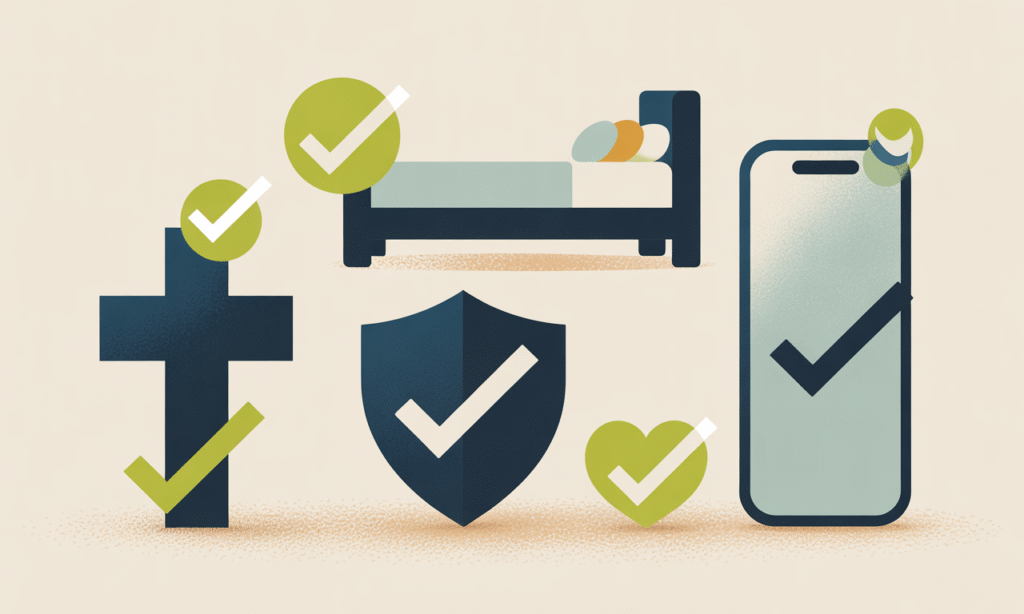 Over-boundarying creates rebellion; under-boundarying creates confusion. Choose the small set of high-leverage domains that shape identity:
Over-boundarying creates rebellion; under-boundarying creates confusion. Choose the small set of high-leverage domains that shape identity:
- Faith and worldview practices (prayer, church, spiritual media)
- Body routines (sleep, nutrition, sugar, screens)
- Safety and consent (secrets, gifts as leverage, privacy, social media)
- Relationship rules (no parent undermining, no “Mom/Dad are too strict” jokes)
- Dating and media (age-appropriate exposure and limits)
The Grandparent Boundary Playbook works best when you pick two or three priorities per season and let everything else be flexible. A child doesn’t need a constitution; they need consistency.
Boundary example statements:
• “Because we’re the parents, we’re choosing church on Sundays so the kids learn rhythms of faith.”
• “Because we’re the parents, we’re choosing no secret gifts, so the kids learn that love doesn’t hide.”
• “Because we’re the parents, we’re choosing screens only after schoolwork so the kids learn to finish what they start.”
Map the “At-Risk” Moments Before They Happen
 Most boundary breaks aren’t random; they cluster around predictable moments—bedtime extensions, pre-meal treats, holiday chaos, or “I bought them a phone because they need one.” Make a short, shared map:
Most boundary breaks aren’t random; they cluster around predictable moments—bedtime extensions, pre-meal treats, holiday chaos, or “I bought them a phone because they need one.” Make a short, shared map:
- Fridays 5–8 p.m.: energy low, bedtime drift
• Holidays 3–6 p.m.: sugar + screen pile-up
• Post-divorce extended family events: competing faith expectations
• Birthdays: surprise gifts violating agreed tech rules
Prevent by design. If you know Friday is weak, schedule grandparent visits earlier or add a post-visit reset ritual. If holidays invite drift, pre-agree on two green-light desserts and a “family walk” reset before bedtime. In your holiday planning section, you can naturally reference the detailed strategies from “Holiday Without Drama” at https://blog.liveyourbestmarriage.com/family-culture/holidays-values-first so everyone can preview the exact cadence you’ll use.
Write Boundary Sentences that Keep Dignity Intact

![]() The wrong words cause unnecessary friction. The right words reduce volume and invite partnership. Use this formula:
The wrong words cause unnecessary friction. The right words reduce volume and invite partnership. Use this formula:
Because we’re the parents, we’re choosing [practice] so the kids learn [virtue].
We’re asking for your help by [specific action].
If this gets hard, we’ll [reset plan].
Examples:
• “Because we’re the parents, we’re choosing one dessert so the kids learn moderation. We’re asking for your help by offering fruit after that. If this gets hard, we’ll take a short walk and wrap for the night.”
• “Because we’re the parents, we’re choosing no sleepovers yet so the kids learn body safety. We’re asking for your help by doing a late movie and pick-up instead. If this gets hard, we can plan a special breakfast next time.”
If you want more ready-to-use wording, we expand these scripts in “The Conversation Kit” at https://blog.liveyourbestmarriage.com/Grandparents-Boundaries/conversation-scripts so you can choose the tone that fits your family.
Replace the Guilt Script with a Truth Script
 Guilt says, “You’re keeping us from our grandkids.” Truth says, “Choices shape access.” If a grandparent repeatedly ignores agreed boundaries, less access isn’t punishment; it’s protection. You can acknowledge pain and hold the line:
Guilt says, “You’re keeping us from our grandkids.” Truth says, “Choices shape access.” If a grandparent repeatedly ignores agreed boundaries, less access isn’t punishment; it’s protection. You can acknowledge pain and hold the line:
“We love you and want you in their lives. Because we’re the parents, we’re choosing these boundaries to keep the kids safe and consistent. When we can trust that these will be honored, we can increase time together.”
For a deeper reframe, share your clarity process with extended family by pointing them to your companion article “From Guilt to Clarity” at https://blog.liveyourbestmarriage.com/Grandparents-Boundaries/guilt-to-clarity, which explains why measured limits are a bridge to relationship, not a wall.
Design Consequences that Invite Repair, Not Warfare
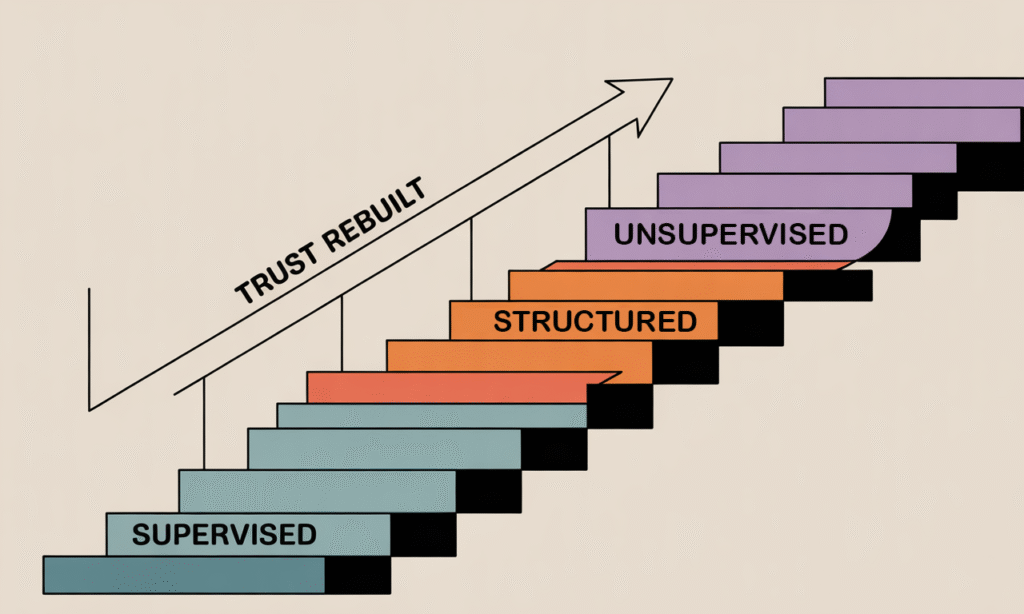 Consequences should be proportionate, predictable, and paired with a path back. Think of “scaling” contact, not canceling relationship.
Consequences should be proportionate, predictable, and paired with a path back. Think of “scaling” contact, not canceling relationship.
Tier 1: Supervised visits (we’re present, shorter duration)
Tier 2: Structured activities only (park, craft, museum with plan)
Tier 3: Pause on unsupervised time until trust rebuilds
The path back should be concrete: “Two visits with full boundary follow-through, then we’ll revisit drop-offs.” Restate hope: “We’re cheering for this. We want easy, joyful time again.” If you need a step-by-step outline, we unpack a full model in “When They Won’t Respect the Boundary” at https://blog.liveyourbestmarriage.com/Grandparents-Boundaries/consequences-repair-path so you can copy/paste a repair process.
Special Case: Faith Differences Without Shaming or Surrendering
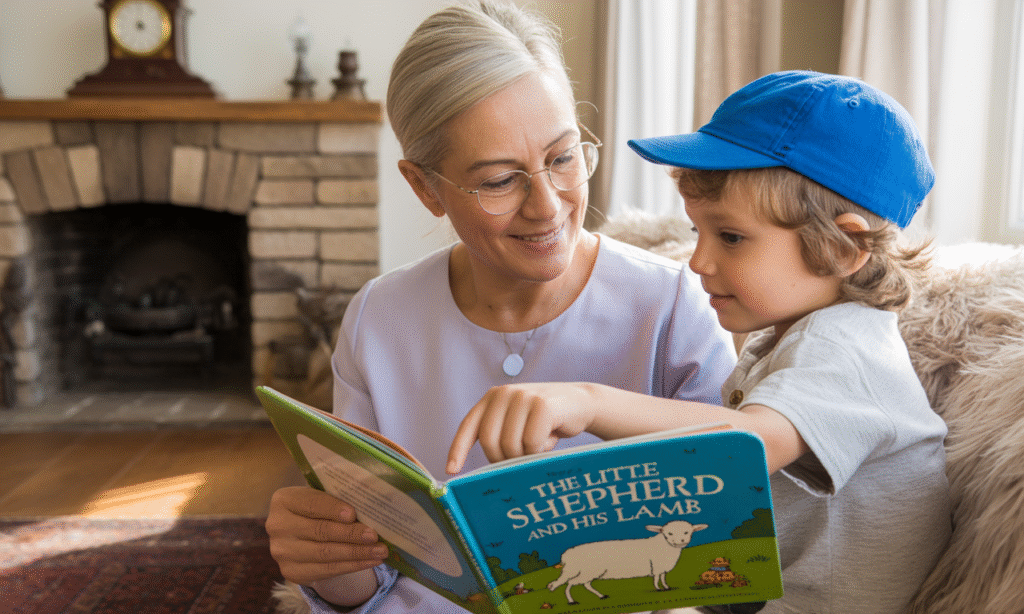 Sometimes a second marriage or major life change shifts a grandparent’s beliefs. Your kids don’t need a theological courtroom; they need a consistent compass. Use this framework:
Sometimes a second marriage or major life change shifts a grandparent’s beliefs. Your kids don’t need a theological courtroom; they need a consistent compass. Use this framework:
Affirm shared loves: “We’re grateful you love books and family traditions.”
Name one non-negotiable: “We’re choosing Sunday church and nightly prayer.”
Provide safe alternatives: “We’d love you to read the kids’ devotional with them.”
Keep open doors for questions: “If they ask faith questions, please say, ‘Great question—ask Mom/Dad tonight.’”
For sample dialogues across holiday services, books, and rituals, your extended family can preview our guide “Mixed Beliefs, Shared Love” at https://blog.liveyourbestmarriage.com/family-culture/faith-differences-grandparents so there’s no guesswork when the moment arrives.
Boundaries for Gifts, Sugar, and Screens (No Bribes, No Battles)
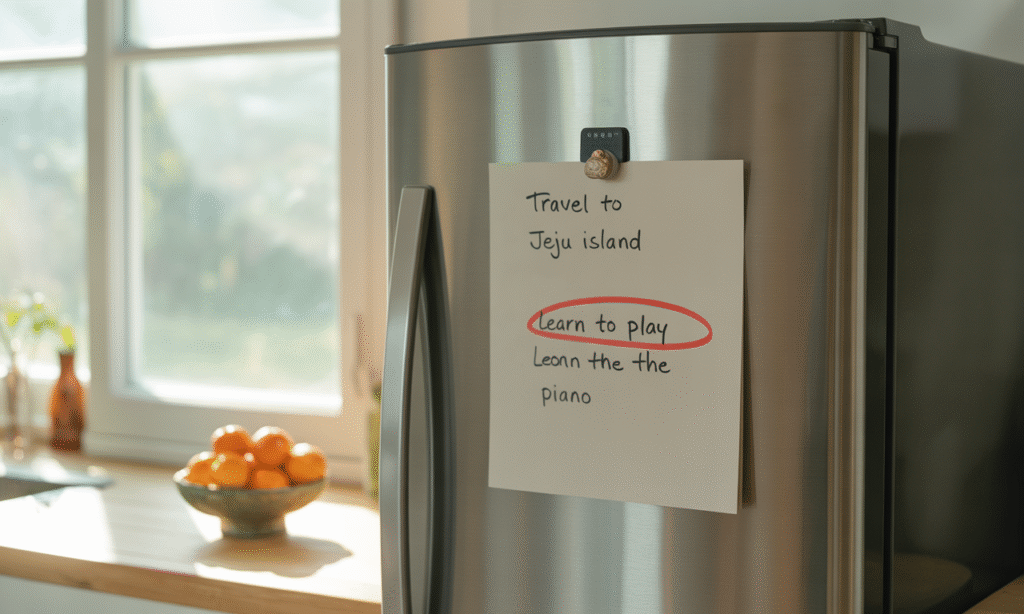 Generosity is beautiful—until it becomes leverage. Protect the meaning of gifts by running them through three lenses:
Generosity is beautiful—until it becomes leverage. Protect the meaning of gifts by running them through three lenses:
- Values-aligned? (experiences over devices, books over bling)
- Parent-approved? (no surprises that change house rules)
- Age-appropriate? (especially tech)
Offer a wishlist the kids help create. Set a one-sweet rule for desserts. For screens, set a pre-approved time block or “show list.” You can share the longer framework for relatives in “No Bribes, No Battles” at https://blog.liveyourbestmarriage.com/family-culture/gifts-screens-sugar-boundaries to help them see the whole picture.
Photos, Posts, and Privacy: A Family-Wide Social Media Agreement
 A child’s digital footprint outlives the moment. Establish a cheerful, family-wide agreement:
A child’s digital footprint outlives the moment. Establish a cheerful, family-wide agreement:
- Ask first, always.
• No location tags or school logos.
• No bath or underwear photos, ever.
• Share to a limited group, not public timelines.
• Remove on request—no debate.
When introducing this to grandparents, lead with honor: “Your photos are treasures. Because we’re the parents, we’re choosing this posting plan so the kids learn privacy and safety.” For a full template everyone can adopt, point to “Photos, Posts, and Privacy” at https://blog.liveyourbestmarriage.com/family-culture/grandparents-social-media-agreement for a ready-to-use agreement.
A One-Page Family Covenant that Grandparents Can Actually Use
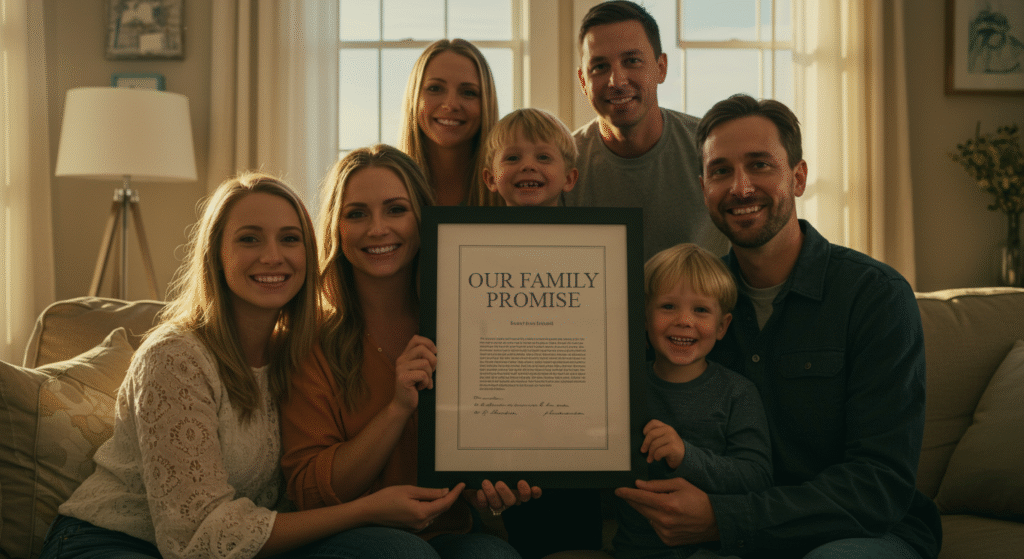 Boundaries stop harm; culture builds health. Turn your rules into a positive one-pager that anyone can read in 60 seconds. Include:
Boundaries stop harm; culture builds health. Turn your rules into a positive one-pager that anyone can read in 60 seconds. Include:
- Our Family Purpose: two sentences (e.g., “We’re raising kind, courageous kids who love God and people.”)
• Our Big Five Practices: faith, sleep, food/sweets, screens, respect for parents
• Our Repair Rule: “If something goes sideways, we pause and reset within 24 hours.”
Introduce it with gratitude: “You’re a huge part of their story, and this helps us all play the same song.” For a printable template, see “Build Your Family Culture: A Covenant for Kids, Grandparents, and Peace” at https://blog.liveyourbestmarriage.com/family-culture/grandparents/family-covenant so no one is guessing.
Holiday Plans that Don’t Melt Down the Boundaries
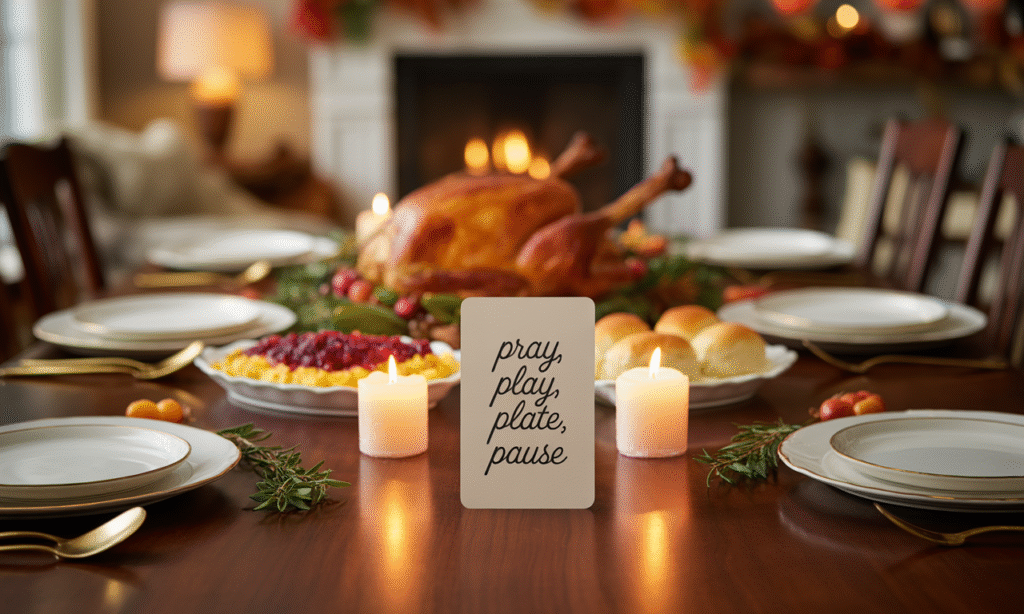 Holidays magnify everything—joy and drift. Beat drift with a simple sequence: pray, play, plate, pause.
Holidays magnify everything—joy and drift. Beat drift with a simple sequence: pray, play, plate, pause.
- Pray: A short gratitude or reading (anchoring faith or values).
• Play: A walk or game before sugar hits.
• Plate: One dessert choice plus fruit.
• Pause: A wind-down cue (music, candles, or a story) before bedtime.
Text hosts your plan a week early: “We’re excited for Thursday! Our kids do best with 1 dessert and 9 p.m. lights out; we’ll do a 6:30 walk to help them settle.” If relatives want detail, invite them to skim the strategies in “Holiday Without Drama” at https://blog.liveyourbestmarriage.com/family-culture/holidays-values-first so the whole team executes the same cadence.
The 24-Hour Repair Rule: Keeping Relationships Tender
 Boundaries will get banged up. The 24-hour repair rule prevents weeks of silent resentment. Within a day of the bump, do three things:
Boundaries will get banged up. The 24-hour repair rule prevents weeks of silent resentment. Within a day of the bump, do three things:
- Name it plainly: “We saw two sodas after we agreed on one.”
- Restate the why: “Moderation helps sleep and behavior.”
- Reset the plan: “Next visit we’ll keep dessert on the counter with a sticky note.”
If hurt feelings run deep, a short call between the adults (without kids present) protects dignity. You’re on the same side: Team Kid. The Grandparent Boundary Playbook wins when everybody refuses to let a single incident rewrite the family story.
A Gentle Script for “But That’s How We Did It with You”
 When a grandparent leans on nostalgia, validate the love and update the playbook:
When a grandparent leans on nostalgia, validate the love and update the playbook:
“I’m grateful for what you gave me—your consistency shaped me. We’ve learned more about sleep and screens since then, and because we’re the parents, we’re choosing this newer approach so the kids learn self-control. We’d love your help trying it.”
Nostalgia is a bridge; don’t burn it. Walk across it to present clarity.
How to Keep the Door Open While Holding the Line
 Holding boundaries is easier when grandparents still feel invited into meaningful roles. Give them “hero jobs”:
Holding boundaries is easier when grandparents still feel invited into meaningful roles. Give them “hero jobs”:
- The Tradition Keeper: reads the same bedtime story each visit
• The Nature Guide: takes a ritual walk to spot birds and clouds
• The Memory Maker: records short audio stories for the kids
• The Skill Mentor: teaches a safe hobby (woodwork, gardening, crocheting)
If they can shine without breaking guardrails, everybody wins. In a follow-up conversation you can say, “We put some ideas together so you can keep doing the things only you can do,” and then share the relevant sections from your Family Covenant article at https://blog.liveyourbestmarriage.com/family-culture/grandparents/family-covenant that list “grandparent hero roles.”
How to Talk When You’re Tired: A Mini-Playbook for Tough Moments
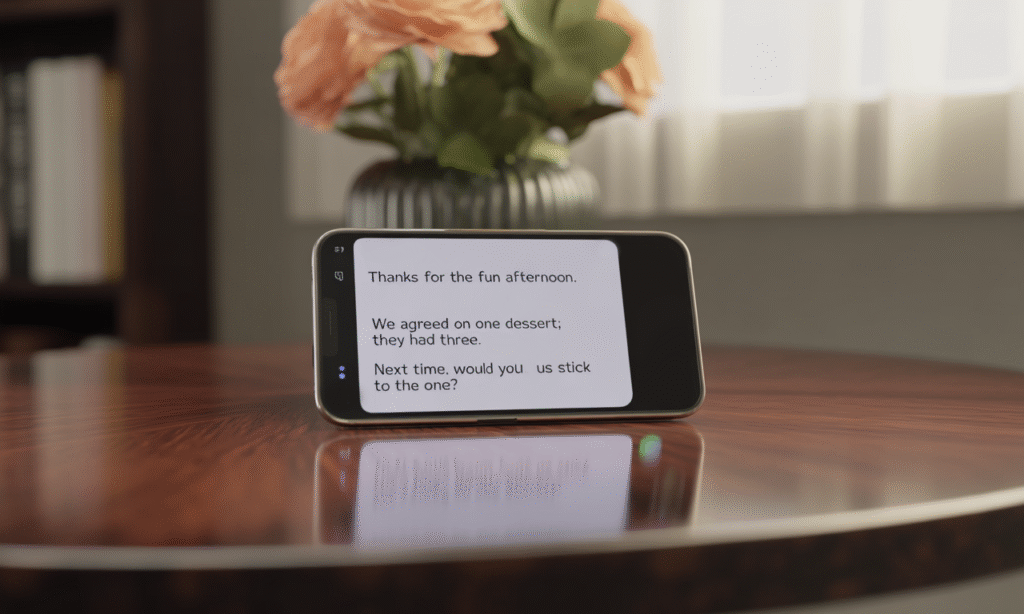 Late-night drop-offs and overstimulated kids aren’t ideal for diplomacy. Use Less-Words Leadership:
Late-night drop-offs and overstimulated kids aren’t ideal for diplomacy. Use Less-Words Leadership:
- Start with gratitude: “Thanks for the fun afternoon.”
• State one fact: “We agreed on one dessert; they had three.”
• Ask for a small next step: “Next time, would you help us stick to the one?”
If emotion spikes, end with a calm reset: “We’ll talk more tomorrow after we rest.” Then follow the 24-hour repair rule. If you need fuller scripts, your extended family can consult the conversation list in “The Conversation Kit” at https://blog.liveyourbestmarriage.com/boundaries/grandparents/conversation-scripts to prepare before the next visit.
The Metrics That Keep Momentum (Without Turning Love Into a Spreadsheet)
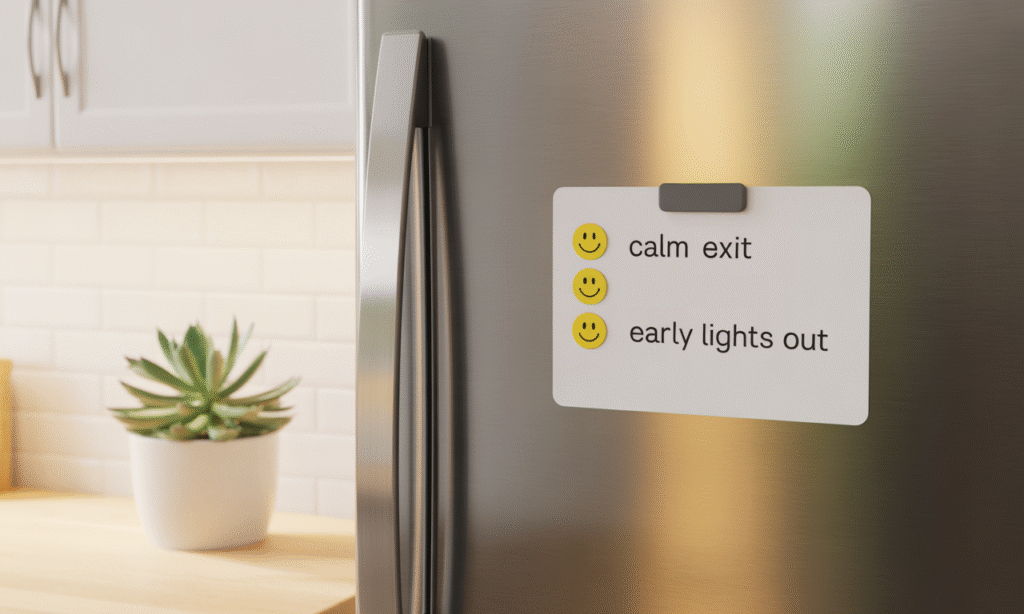 What gets measured gets repeated. Keep it human—just track what helps:
What gets measured gets repeated. Keep it human—just track what helps:
- Repair speed: time from boundary bump to reconnection
• Consistency streaks: number of visits following the top three boundaries
• Calm exits: number of goodbyes without conflict
• Kid signals: bedtime settled? fewer meltdowns?
Share improvements to encourage buy-in: “In the last three visits, the kids fell asleep faster and mornings were smoother.” Small wins are contagious. If you already use simple progress trackers in your home, you might like the momentum ideas we outline in other parts of your site; for example, when discussing “consistency streaks,” some families link to their broader habits post so grandparents see the big picture of why routines matter.
When Boundaries Are Broken Repeatedly: Raising the Floor
 If clarity, scripts, and scaled contact still aren’t enough, you may need to “raise the floor”—the minimum standard for access. This is painful and sometimes necessary. Keep the message simple and future-oriented:
If clarity, scripts, and scaled contact still aren’t enough, you may need to “raise the floor”—the minimum standard for access. This is painful and sometimes necessary. Keep the message simple and future-oriented:
“We love you. Because we’re the parents, we need to pause unsupervised time until we can trust the boundaries again. We’ll plan a weekly supervised visit so we stay connected. After three smooth weeks, we’ll review the plan.”
Document it in writing, not to weaponize, but to reduce confusion. And keep a path back visible. Persistent clarity plus visible hope is the heart of The Grandparent Boundary Playbook.
Blended Families and Second Marriages: Aligning Across Households
 Boundary complexity multiplies when multiple homes and marriages are involved. Create “lowest common denominator” agreements for transitions:
Boundary complexity multiplies when multiple homes and marriages are involved. Create “lowest common denominator” agreements for transitions:
- Keep the same bedtime window across homes when possible.
• Use a shared “green-light gift” list accessible to all grandparents.
• Agree on a “no secrets” rule that spans households.
• Share one faith/love ritual that travels (a short blessing or gratitude list).
When a new spouse brings new beliefs, hold to respect-plus-clarity. Invite their input on neutral activities they love (nature walks, crafts) that don’t collide with your non-negotiables.
Protecting Presence in a Digital Age (Grandparents Edition)
 Even the kindest grandparent can default to screens for connection. Offer alternatives that are just as easy:
Even the kindest grandparent can default to screens for connection. Offer alternatives that are just as easy:
- “Read and record” mode: they record themselves reading a story; kids re-listen later
• “Show and tell” calls: three items from their house tied to family history
• “Mini-missions”: postcard scavenger hunts, silly riddles, plant a seed together
If social media is part of their joy, channel it safely by reminding them of your family’s digital covenant. When explaining your approach, many families like to briefly mention your broader digital cornerstone for context; for example, “We’re following the approach in our Digital Covenant here at https://blog.liveyourbestmarriage.com/digital/rituals/digital-covenant-tech-healthy-marriage, so we have a consistent approach across the whole family.”
Case Studies: Three Real-Life Scenarios and How to Respond
 Case 1: The Surprise Phone
Case 1: The Surprise Phone
Grandma buys an unlocked smartphone for a ten-year-old “for emergencies.”
Response: “Because we’re the parents, we’re choosing no personal phones until high school so they learn to be present. We’re grateful for your desire to keep them safe. We’ll return the device and pick out a family emergency phone together.” Share your “No Bribes, No Battles” framework to show the thinking at https://blog.liveyourbestmarriage.com/family-culture/gifts-screens-sugar-boundaries.
Case 2: The Faith Swap
Grandpa invites kids to a service that conflicts with your faith.
Response: “Because we’re the parents, we’re choosing our church service together on Sundays so they learn our family’s faith. We’d love for you to join us, or we can all enjoy lunch after.” If they have questions, guide them to “Mixed Beliefs, Shared Love” at https://blog.liveyourbestmarriage.com/family-culture/faith-differences-grandparents to understand your approach.
Case 3: The Dessert Spiral
Aunt offers three desserts after you agreed on one.
Response: “We’re so glad everyone had fun. We’re keeping the one-dessert plan so they sleep well. Next time we’ll bring fruit kebabs to make it easy.” Keep it light, keep it forward.
A 10-Minute Couple Check-In That Keeps You United
 Grandparent friction can expose micro-gaps between partners. Before each visit, take ten minutes:
Grandparent friction can expose micro-gaps between partners. Before each visit, take ten minutes:
- What matters most this week? (pick 2 boundaries)
• What sentence will we use? (agree on wording)
• What could go sideways? (pick a reset plan)
• How will we debrief afterward? (set a time now)
Couple unity is the amplifier of calm. If you both say the same simple thing, confusion declines and cooperation rises.
Teaching Kids to Understand (Age-Appropriate) Boundaries
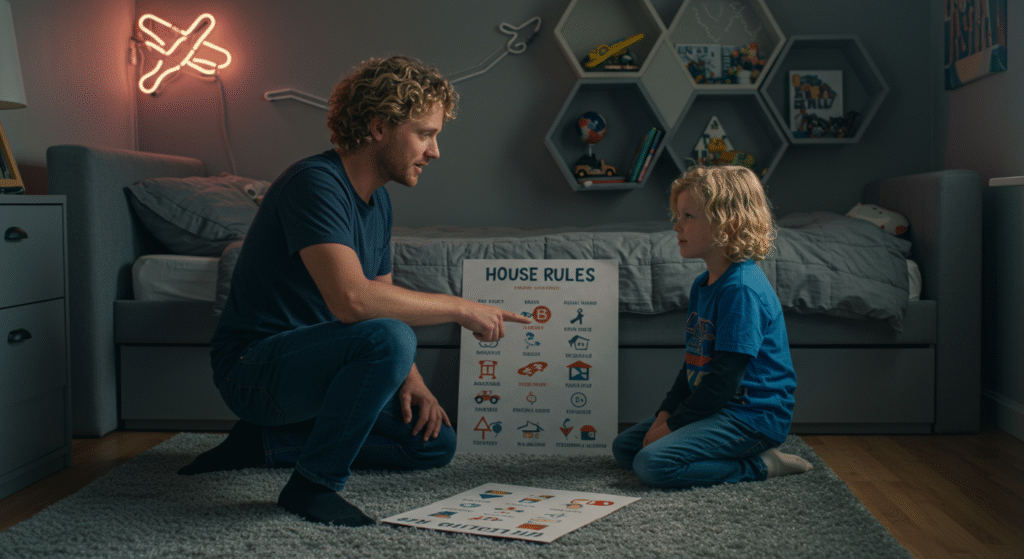 Kids handle boundaries best when they know the why in their language:
Kids handle boundaries best when they know the why in their language:
- “We do one dessert so our bodies sleep well and play better tomorrow.”
• “We tell Mom/Dad about any gifts so love doesn’t need secrets.”
• “We say our prayer together so our hearts stay brave and kind.”
When kids understand, they don’t feel caught in a tug-of-war—they become truth tellers: “At our house we do it this way.” That calm confidence reduces triangulation and guilt.
When You’re the Grandparent Reading This
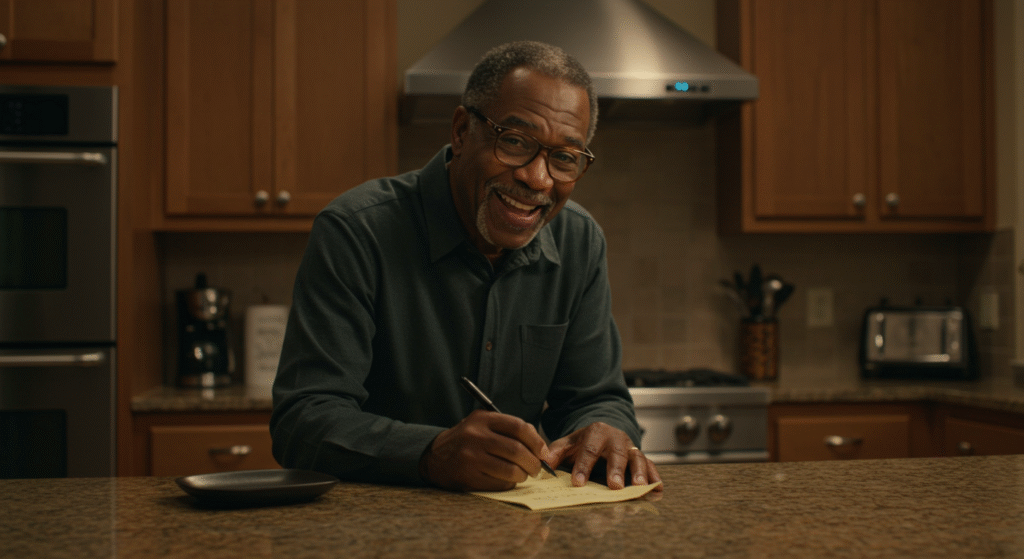 If you’re the grandparent, thank you for loving your family enough to learn new moves. Here’s the deepest secret: your influence grows when you choose alignment over argument. You get more time, more trust, and more memories. Ask for the one-page covenant, read the scripts, and pick a hero role. Then say the ten magic words: “How can I help you make your values easy here?”
If you’re the grandparent, thank you for loving your family enough to learn new moves. Here’s the deepest secret: your influence grows when you choose alignment over argument. You get more time, more trust, and more memories. Ask for the one-page covenant, read the scripts, and pick a hero role. Then say the ten magic words: “How can I help you make your values easy here?”
The Grandparent Boundary Playbook in One Page
- Parents lead, grandparents support
- Choose a handful of high-leverage boundaries
- Map at-risk moments and plan resets
- Use three-line boundary sentences
- Replace guilt scripts with truth and hope
- Scale contact when needed, with a path back
- Build a positive Family Covenant everyone can use
- Celebrate progress with simple metrics
- Keep faith differences respectful and clear
- Repair fast—within 24 hours
A Final Word to Your Future Self
 A year from now, what story do you want your child to tell about love and leadership? Boundaries are the quiet grammar of that story. They teach kids that love is safe, truth is kind, and family is a team. You don’t need a thousand rules. You need a few clear agreements held with calm courage—and a wide-open door for joy.
A year from now, what story do you want your child to tell about love and leadership? Boundaries are the quiet grammar of that story. They teach kids that love is safe, truth is kind, and family is a team. You don’t need a thousand rules. You need a few clear agreements held with calm courage—and a wide-open door for joy.
As you live this out, keep your interlinking resources handy so extended family can self-educate. When authority questions surface, you can gently point to “Whose Rules Win?” at https://blog.liveyourbestmarriage.com/Grandparents-Boundaries/parental-authority; when awkward talks loom, send them the scripts in “The Conversation Kit” at https://blog.liveyourbestmarriage.com/Grandparents-Boundaries/conversation-scripts; and when shared culture needs a boost, offer the “Family Covenant” template at https://blog.liveyourbestmarriage.com/family-culture/grandparents/family-covenant. That way, you’re not arguing—you’re aligning around the same Grandparent Boundary Playbook.
Frequently Asked Questions About Grandparent Boundaries
 Q: Are we being too strict by limiting sweets, screens, or certain beliefs at Grandma’s?
Q: Are we being too strict by limiting sweets, screens, or certain beliefs at Grandma’s?
A: Not if your limits are linked to a clear why (“sleep, safety, formation”) and held with warmth. The Grandparent Boundary Playbook asks for fewer rules with stronger reasons, not more rules with louder voices.
Q: What if one set of grandparents cooperates and the other doesn’t?
A: Celebrate and include the cooperative set visibly (photos, thank-you notes); it quietly models what’s possible. With the other set, keep using the three-line sentence, scale contact proportionately, and keep the repair path visible.
Q: How do we handle “different house, different rules”?
A: You can honor that principle for many things (meal times, activities) while holding a handful of non-negotiables across households (no secrets, faith practice, bedtime window). Explain the difference to kids so it feels coherent, not arbitrary.
Q: Isn’t this all too formal?
A: Clarity is kindness. A one-page covenant prevents a thousand mini-arguments. It’s not legalistic—it’s loving.
Q: What if a grandparent insists they know better because they raised you?
A: Appreciate the experience and frame the update: “You taught me consistency. We’re applying that same consistency with what we’ve learned today.” Nostalgia honored, leadership maintained.
Q: Our family isn’t religious—does this still apply?
A: Absolutely. Replace “faith practices” with “core values” (gratitude, service, curiosity) and keep the same structure: parents lead, grandparents support, small set of non-negotiables, quick repairs.
Q: How do we avoid making kids feel like messengers between adults?
A: Teach kids to say, “Ask my mom/dad,” and ensure all boundary conversations happen adult-to-adult. That one move removes triangulation.
Quick Tools You Can Use This Week
- The Three-Line Text
“Because we’re the parents, we’re choosing [X] so the kids learn [Y]. Could you help by [Z]? If this gets hard, we’ll [reset plan].” - The 10-Minute Pre-Visit Huddle
Pick 2 boundaries, agree on wording, predict one weak moment, choose a reset, schedule a debrief. - The 24-Hour Repair
Name the bump, restate the why, reset the plan; follow up with one gratitude. - The Green-Light Gifts List
Make a shared note with 10 approved ideas; update quarterly. - The Privacy Pact
Ask-first, no geotags, no bath/underwear pics, delete on request.
As your relatives lean in, send them to specific articles so they can read at their own pace: authority clarity at https://blog.liveyourbestmarriage.com/Grandparents-Boundaries/parental-authority, conversation scripts at https://blog.liveyourbestmarriage.com/Grandparents-Boundaries/conversation-scripts, and social posting agreements at https://blog.liveyourbestmarriage.com/family-culture/grandparents-social-media-agreement. Spreading these links across moments—planning, visiting, posting—keeps the interlinking natural and useful.
Closing: Choose the Story You Want Your Kids to Remember
 Your home is a small culture with a big mission. Grandparents can be your strongest allies when the music is clear and the steps are simple. The Grandparent Boundary Playbook is really a love letter to your children’s future—one where peace and principles hold hands, and every generation gets to play its part with joy.
Your home is a small culture with a big mission. Grandparents can be your strongest allies when the music is clear and the steps are simple. The Grandparent Boundary Playbook is really a love letter to your children’s future—one where peace and principles hold hands, and every generation gets to play its part with joy.


